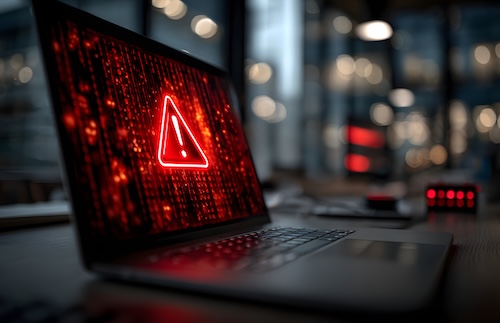Key points:
The education sector is making measurable progress in defending against ransomware, with fewer ransom payments, dramatically reduced costs, and faster recovery rates, according to the fifth annual Sophos State of Ransomware in Education report from Sophos.
Still, these gains are accompanied by mounting pressures on IT teams, who report widespread stress, burnout, and career disruptions following attacks–nearly 40 percent of the 441 IT and cybersecurity leaders surveyed reported dealing with anxiety.
Over the past five years, ransomware has emerged as one of the most pressing threats to education–with attacks becoming a daily occurrence. Primary and secondary institutions are seen by cybercriminals as “soft targets”–often underfunded, understaffed, and holding highly sensitive data. The consequences are severe: disrupted learning, strained budgets, and growing fears over student and staff privacy. Without stronger defenses, schools risk not only losing vital resources but also the trust of the communities they serve.
Indicators of success against ransomware
The new study demonstrates that the education sector is getting better at reacting and responding to ransomware, forcing cybercriminals to evolve their approach. Trending data from the study reveals an increase in attacks where adversaries attempt to extort money without encrypting data. Unfortunately, paying the ransom remains part of the solution for about half of all victims. However, the payment values are dropping significantly, and for those who have experienced data encryption in ransomware attacks, 97 percent were able to recover data in some way. The study found several key indicators of success against ransomware in education:
- Stopping more attacks: When it comes to blocking attacks before files can be encrypted, both K-12 and higher education institutions reported their highest success rate in four years (67 percent and 38 percent of attacks, respectively).
- Following the money: In the last year, ransom demands fell 73 percent (an average drop of $2.83M), while average payments dropped from $6M to $800K in lower education and from $4M to $463K in higher education.
- Plummeting cost of recovery: Outside of ransom payments, average recovery costs dropped 77 percent in higher education and 39 percent in K-12 education. Despite this success, K-12 education reported the highest recovery bill across all industries surveyed.
Gaps still need to be addressed
While the education sector has made progress in limiting the impact of ransomware, serious gaps remain. In the Sophos study, 64 percent of victims reported missing or ineffective protection solutions; 66 percent cited a lack of people (either expertise or capacity) to stop attacks; and 67 percent admitted to having security gaps. These risks highlight the critical need for schools to focus on prevention, as cybercriminals develop new techniques, including AI-powered attacks.
Highlights from the study that shed light on the gaps that still need to be addressed include:
- AI-powered threats: K-12 education institutions reported that 22 percent of ransomware attacks had origins in phishing. With AI enabling more convincing emails, voice scams, and even deepfakes, schools risk becoming test grounds for emerging tactics.
- High-value data: Higher education institutions, custodians of AI research and large language model datasets, remain a prime target, with exploited vulnerabilities (35 percent) and security gaps the provider was not aware of (45 percent) as leading weaknesses that were exploited by adversaries.
- Human toll: Every institution with encrypted data reported impacts on IT staff. Over one in four staff members took leave after an attack, nearly 40 percent reported heightened stress, and more than one-third felt guilt they could not prevent the breach.
“Ransomware attacks in education don’t just disrupt classrooms, they disrupt communities of students, families, and educators,” said Alexandra Rose, director of CTU Threat Research at Sophos. “While it’s encouraging to see schools strengthening their ability to respond, the real priority must be preventing these attacks in the first place. That requires strong planning and close collaboration with trusted partners, especially as adversaries adopt new tactics, including AI-driven threats.”
Holding on to the gains
Based on its work protecting thousands of educational institutions, Sophos experts recommend several steps to maintain momentum and prepare for evolving threats:
- Focus on prevention: The dramatic success of lower education in stopping ransomware attacks before encryption offers a blueprint for broader public sector organizations. Organizations need to couple their detection and response efforts with preventing attacks before they compromise the organization.
- Secure funding: Explore new avenues such as the U.S. Federal Communications Commission’s E-Rate subsidies to strengthen networks and firewalls, and the UK’s National Cyber Security Centre initiatives, including its free cyber defense service for schools, to boost overall protection. These resources help schools both prevent and withstand attacks.
- Unify strategies: Educational institutions should adopt coordinated approaches across sprawling IT estates to close visibility gaps and reduce risks before adversaries can exploit them.
- Relieve staff burden: Ransomware takes a heavy toll on IT teams. Schools can reduce pressure and extend their capabilities by partnering with trusted providers for managed detection and response (MDR) and other around-the-clock expertise.
- Strengthen response: Even with stronger prevention, schools must be prepared to respond when incidents occur. They can recover more quickly by building robust incident response plans, running simulations to prepare for real-world scenarios, and enhancing readiness with 24/7/365 services like MDR.
Data for the State of Ransomware in Education 2025 report comes from a vendor-agnostic survey of 441 IT and cybersecurity leaders – 243 from K-12 education and 198 from higher education institutions hit by ransomware in the past year. The organizations surveyed ranged from 100-5,000 employees and across 17 countries. The survey was conducted between January and March 2025, and respondents were asked about their experience of ransomware over the previous 12 months.
This press release originally appeared online.
k-12-districts-are-fighting-ransomware-but-it-teams-pay-the-price Latest posts by eSchool Media Contributors (see all)

